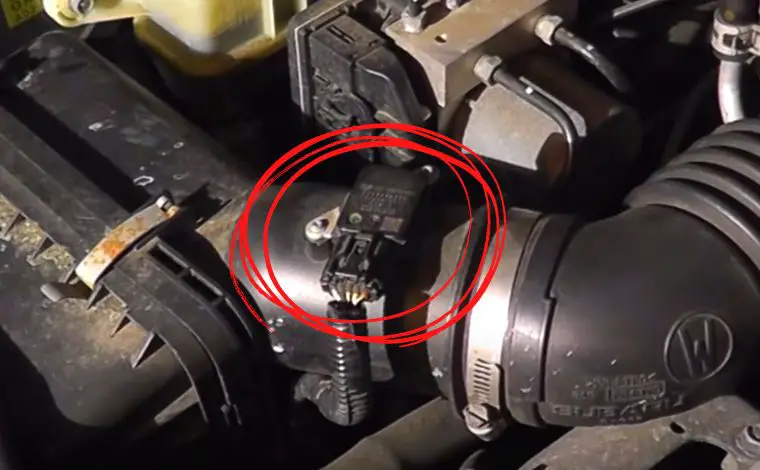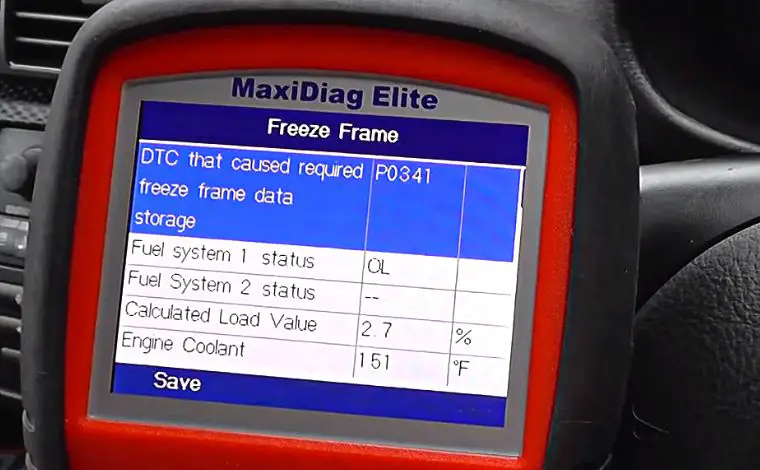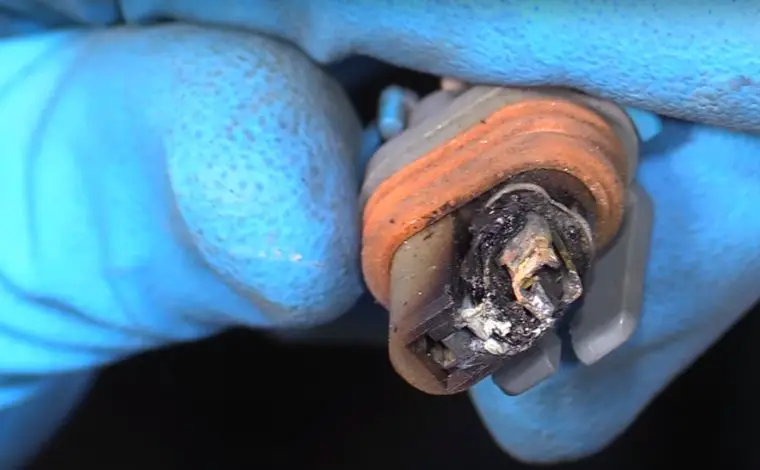Last Updated on April 28, 2025
The Diagnostic Trouble Code (DTC) P0054 is a generic powertrain code that is commonly triggered across various vehicle models. This code specifically refers to the Heated Oxygen Sensor (HO2S) Heater Resistance Bank 1 Sensor 2. Breaking it down: “Sensor 2” indicates the downstream or post-catalytic oxygen sensor, while “Bank 1” refers to the side of the engine that houses cylinder number 1.
The oxygen sensor plays a crucial role in monitoring the amount of oxygen in the exhaust gases. A malfunction here can disrupt the fuel-to-air ratio, impacting both performance and emissions. When the Powertrain Control Module (PCM) detects an unusual resistance in the sensor’s heating element, it logs the P0054 code and triggers the Malfunction Indicator Lamp (MIL) on the dashboard.
Potential causes range from a faulty sensor to issues with wiring or the Engine Control Module (ECM). Prompt diagnosis and repair are essential to prevent further vehicle damage.
Possible Reasons Behind DTC P0054
Several issues can trigger the P0054 code. Recognizing these potential causes can help streamline the diagnosis and repair process:
- Faulty Heated Oxygen Sensor (HO2S): A damaged or aged sensor is the most common reason for this code.
- Blown Fuse: A blown fuse within the oxygen sensor circuit can disrupt heater function.
- ECM or PCM Failure: If the vehicle’s computer system malfunctions, it may incorrectly trigger the code.
- Worn Wiring or Connectors: Corroded, broken, or shorted wires leading to the oxygen sensor can affect heater resistance readings.
- Faulty HO2S Heater Element: A damaged heating element within the sensor causes incorrect resistance levels.
- Exhaust Leaks: Leaks near the oxygen sensor can lead to improper readings.
Each of these issues, if left unchecked, can escalate into more severe engine performance problems, emphasizing the need for immediate attention.
Possible Solutions for P0054
To resolve the P0054 DTC, several potential fixes can be considered:
- Inspect Vacuum Leaks: A vacuum leak can indirectly impact the oxygen sensor’s performance. Fixing leaks can resolve the issue.
- Check Oxygen Sensor Wiring and Connectors: Look for any damaged or frayed wiring and repair as needed.
- Test Sensor Voltage and Ground Signals: Use a multimeter to ensure correct voltage and grounding at the sensor.
- Replace Faulty Oxygen Sensor: If the sensor itself has failed, replacing it is often the most effective solution.
- Inspect Exhaust System: Repair any exhaust leaks near the oxygen sensor to maintain accurate readings.
- Verify Fuel Pressure: Incorrect fuel pressure can affect oxygen sensor operation. Adjust as necessary.
- Inspect Fuel Injectors: Faulty injectors can cause lean or rich conditions, affecting sensor readings.
- Examine ECM/PCM Operation: A software update or replacement may be required if the computer is malfunctioning.
- Perform a Tune-Up: Regular maintenance, including replacing spark plugs and air filters, can prevent sensor-related issues.
- Reset ECM and Clear Codes: After repairs, clear the error code and monitor if it reappears.
Following these steps ensures the root cause is properly addressed, preventing the code from recurring.
DTC P0054: Malfunction Criteria and Threshold Values
The P0054 trouble code is specifically triggered when the PCM detects that the oxygen sensor heater resistance is outside of the acceptable range. The key malfunction criteria and thresholds include:
- Engine Soak Time: Must exceed 36,000 seconds (approximately 10 hours) before certain tests initiate.
- Coolant Temperature (ECT): Irregularities or discontinuities may affect oxygen sensor performance.
- Ignition Key Issues: Unexpected deactivation of the ignition system can lead to the P0054 code.
- Intake Air Temperature Faults: Extremely cold intake temperatures can impact heater operation.
- Ignition Voltage: Must be lower than 18V; voltages exceeding this can harm the sensor circuit.
- Temperature Ranges: Engine coolant and intake air temperatures should stay between -30°C and 45°C.
When these thresholds are exceeded, it indicates either the heater is open-circuited or has excessive resistance. Monitoring these conditions helps ensure proper diagnosis and avoid unnecessary repairs.
Possible Symptoms and Malfunctions of DTC P0054
Recognizing the symptoms of the P0054 code early can save you from costly repairs down the line. Here are the most common signs associated with this trouble code:
- Illuminated Check Engine Light (MIL): The first and most obvious symptom is the dashboard warning light.
- Reduced Fuel Efficiency: A malfunctioning oxygen sensor can cause incorrect fuel-to-air ratios, resulting in excessive fuel consumption.
- Poor Engine Performance: You might notice sluggish acceleration, rough idling, or reduced engine power.
- Black Smoke from Exhaust: An overly rich mixture can lead to visible black exhaust smoke.
- Starting Issues: Difficulty starting the vehicle or experiencing “limp mode” activation may occur.
- Unusual Engine Noises: A faulty oxygen sensor can cause strange sounds, including knocking or sputtering.
- Increased Emissions: The vehicle may fail emissions testing due to improper exhaust gas regulation.
Timely identification of these symptoms is critical to prevent further engine and emission system damage.
Leading Causes of Error Code P0054
Several underlying issues can lead to the triggering of the P0054 code. Understanding these causes helps guide accurate repairs:
- Low Fuel Pressure or Wrong Fuel Type: Incorrect fuel pressure or using the wrong fuel viscosity can affect the oxygen sensor’s readings.
- Defective Oxygen Sensor: A malfunctioning HO2S is the most common root cause.
- Broken Connectors or Wiring Issues: Frayed, shorted, or corroded wiring connections can disrupt heater resistance.
- Coolant or Exhaust Gas Leaks: Leaks can contaminate the sensor, reducing its effectiveness.
- Damaged Catalytic Converter: A compromised catalytic converter can lead to incorrect sensor readings downstream.
- PCM/ECM Malfunctions: Software glitches or hardware failures in the vehicle’s computer can trigger the error.
- Environmental Factors: Severe temperature extremes can affect sensor performance and heater operation.
By pinpointing the correct cause, you can avoid unnecessary part replacements and additional expenses.
How to Diagnose the P0054 Code
Diagnosing the P0054 code effectively requires a systematic approach. Here’s how to properly investigate this error:
- Use an OBD2 Scanner: Connect a diagnostic scanner to retrieve the fault code and any associated freeze-frame data.
- Visual Inspection: Carefully examine the wiring harness and connectors leading to the downstream oxygen sensor (Bank 1, Sensor 2).
- Check for Exhaust Leaks: Look for visible signs of exhaust gas escaping near the oxygen sensor.
- Test Oxygen Sensor Resistance: Using a multimeter, measure the resistance of the sensor’s heater circuit. Compare it with manufacturer specifications.
- Inspect Power and Ground: Ensure the sensor is receiving proper voltage and has a clean ground connection.
- Check Fuel System Health: Verify fuel pressure and check for vacuum leaks.
- Examine the PCM: If all else checks out, ensure the PCM is operating correctly without software corruption.
- Road Test: After repairs, clear the code and take a short drive to verify if the code reappears.
A thorough diagnosis prevents guesswork and speeds up the repair process.
Troubleshooting Process for DTC P0054
Fixing the P0054 error code can be straightforward if you follow a methodical troubleshooting process:
1. Examine Freeze Frame Data
Retrieve freeze-frame data from the OBD2 scanner to capture critical information about the conditions when the code was set. This helps narrow down the issue.

2. Inspect Wiring and Connectors
Look for visible damage, burns, corrosion, or disconnection. Pay particular attention to areas near heat sources like the exhaust manifold.
3. Test Resistance and Voltage
Use a digital multimeter to check the oxygen sensor’s resistance. Also, ensure the heater circuit has the proper voltage supply.
4. Replace Oxygen Sensor if Necessary
If the sensor is outside specified resistance ranges or visibly damaged, replace it.
5. Repair Exhaust Leaks
Fix any exhaust leaks near the downstream oxygen sensor to ensure accurate readings.
6. Update PCM Software
If the problem persists despite physical repairs, a PCM software update may resolve the issue.
Following these steps increases the likelihood of a successful and lasting repair.
How Much Does It Cost to Repair DTC P0054?
The cost of repairing a P0054 code can vary depending on the underlying cause. Here’s a general breakdown:
- Oxygen Sensor Replacement: $150 to $400, including parts and labor.
- Wiring Repairs: $50 to $200 depending on the extent of damage.
- Exhaust Leak Repairs: $100 to $300 based on location and severity.
- PCM Reprogramming: $100 to $200 if needed.
- Diagnostic Fees: $100 to $150 at most automotive shops.
If you are skilled with basic mechanical work, DIY replacement of the oxygen sensor can significantly reduce costs. Always use OEM-quality parts to ensure long-term durability.
How Severe is the P0054 Code?
While the P0054 code may not immediately cause your vehicle to break down, it should not be ignored:
- Increased Emissions: A faulty oxygen sensor leads to excess emissions, harming the environment.
- Reduced Fuel Efficiency: Expect more frequent trips to the gas station until repairs are completed.
- Engine Performance Issues: Hesitation, misfires, and rough idling can escalate over time.
- Damage to Catalytic Converter: Prolonged issues can overheat and damage the catalytic converter, an extremely expensive component to replace.
- Long-Term Engine Damage: Incorrect fuel-air ratios can lead to severe engine problems if ignored.
Addressing the issue promptly saves money and preserves your vehicle’s long-term health.
Related DTC Codes
The P0054 code is closely related to other oxygen sensor heater circuit issues. Here are similar codes you might encounter:
- P0053: Heated Oxygen Sensor (HO2S) Heater Resistance (Bank 1, Sensor 1).
- P0055: Heated Oxygen Sensor (HO2S) Heater Resistance (Bank 1, Sensor 3).
- P0059: Heated Oxygen Sensor (HO2S) Heater Resistance (Bank 2, Sensor 1).
- P0060: Heated Oxygen Sensor (HO2S) Heater Resistance (Bank 2, Sensor 2).
- P0061: Heated Oxygen Sensor (HO2S) Heater Resistance (Bank 2, Sensor 3).
Knowing these related codes can provide additional insights if multiple issues are present simultaneously.
Wrapping Up
The P0054 code indicates a problem with the oxygen sensor heater circuit that, if left unaddressed, can lead to worsening fuel efficiency, engine performance issues, and environmental harm. Fortunately, with the right diagnostic tools, a careful inspection, and a methodical approach, this issue can often be resolved quickly and affordably.
Whether you’re handling the repair yourself or seeking professional help, understanding the root causes, symptoms, and solutions empowers you to make informed decisions. Keep in mind that ignoring this code may result in more serious (and expensive) repairs down the line.
Stay proactive—your vehicle, your wallet, and the environment will thank you.
Kevin Nicholas is an automotive technician who is a genius at software and hardware-related issues. He manually tested more than a hundred OBD scanners and gave his honest opinion on whether the device was worth the money or not. His in-depth OBD review articles help people choose the right product, whether it is a European, American, or Asian vehicle. He completed his Automotive Specialized Training Course at Universal Technical Institute and has more than 15 years of experience in the field.
